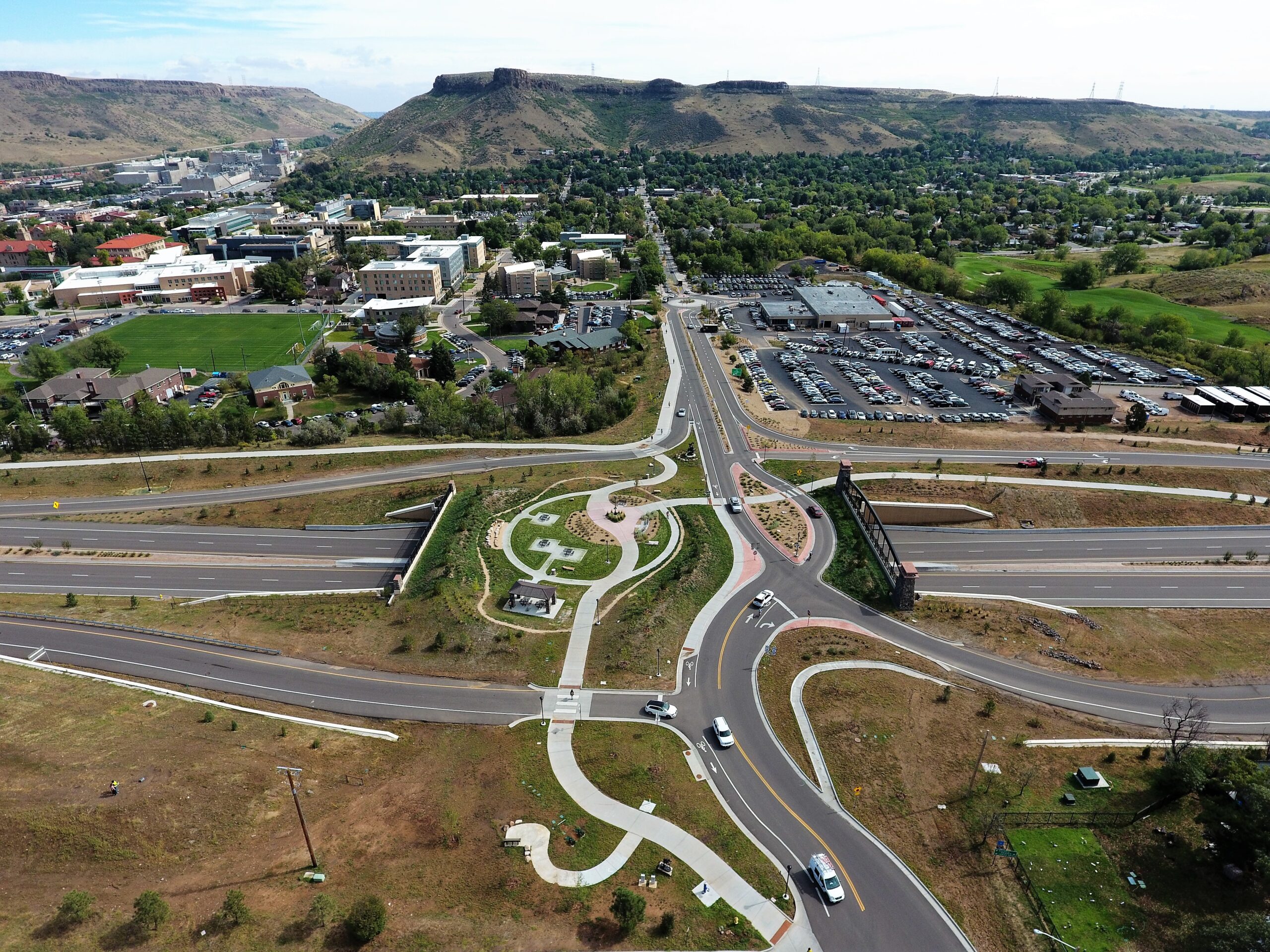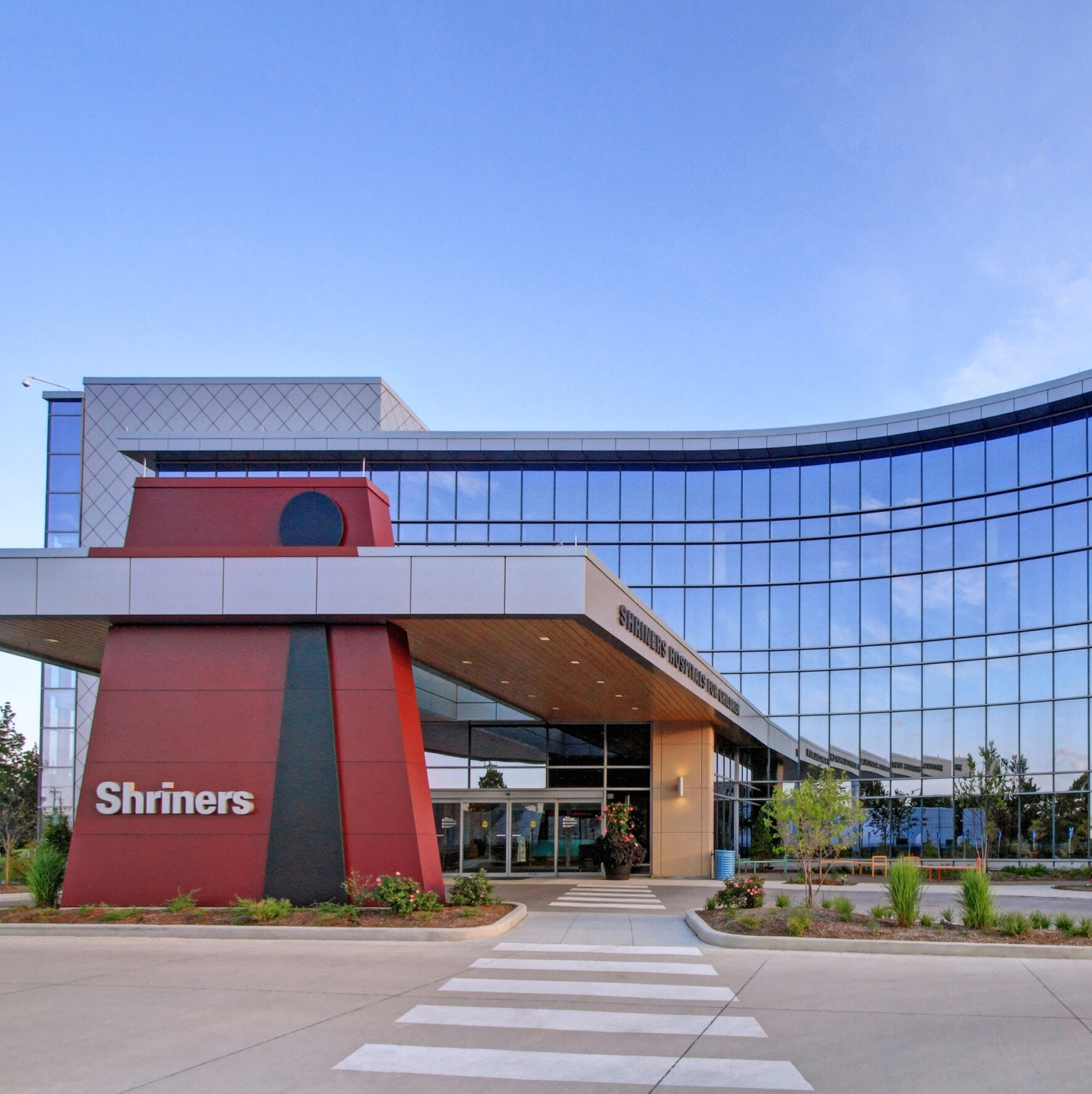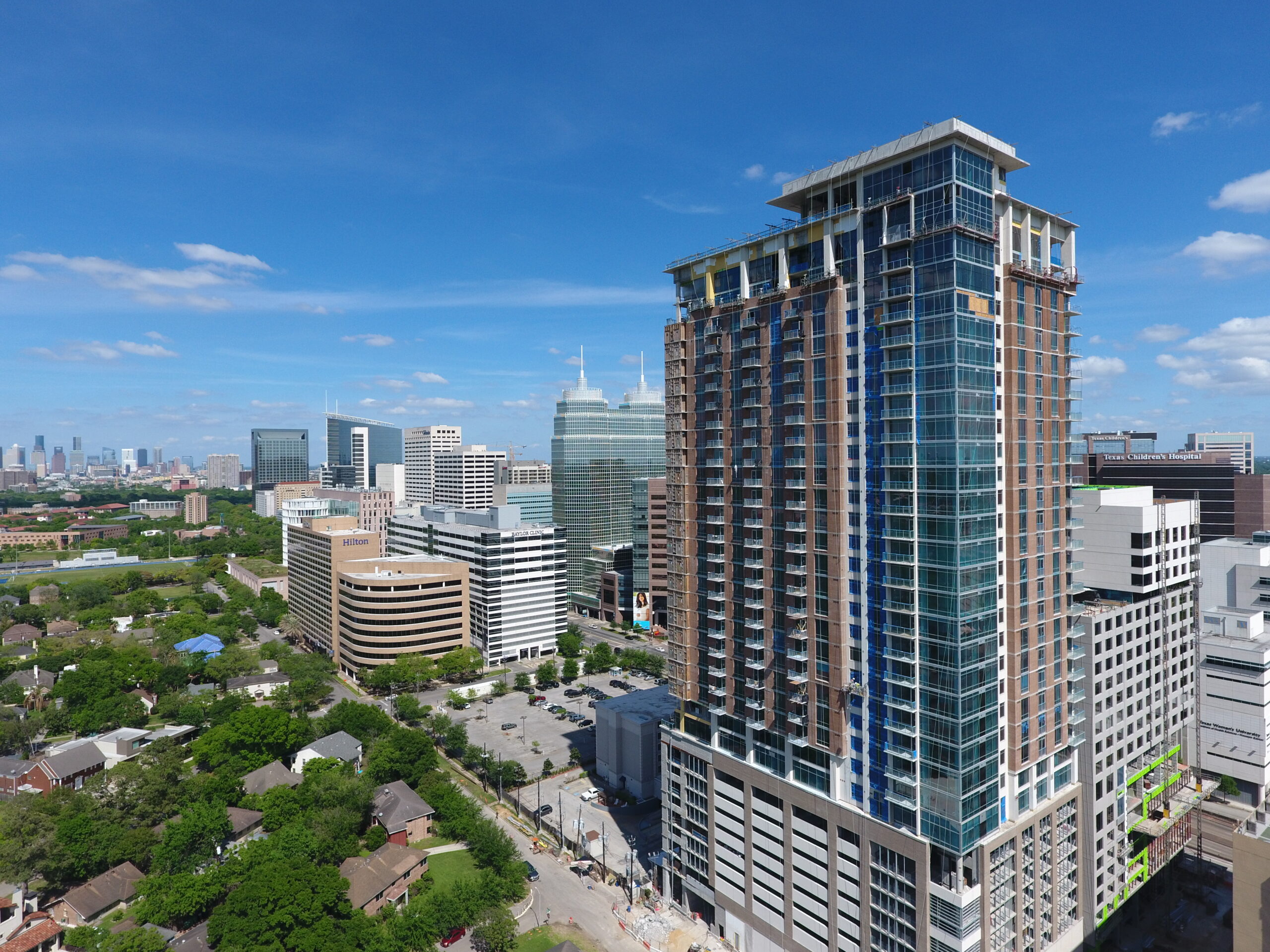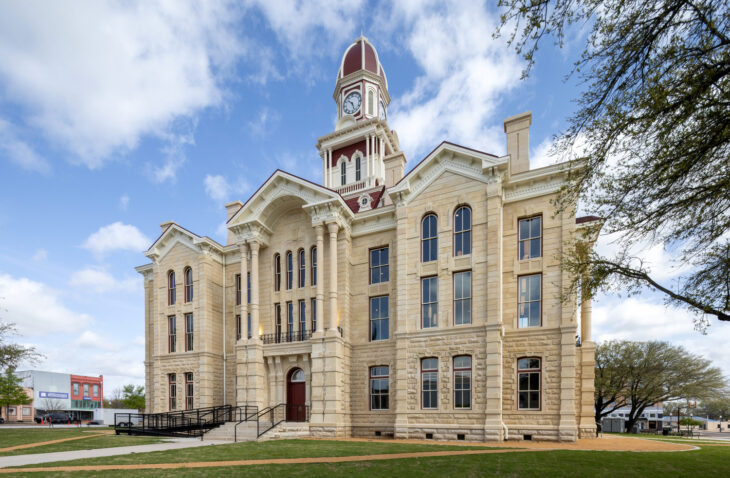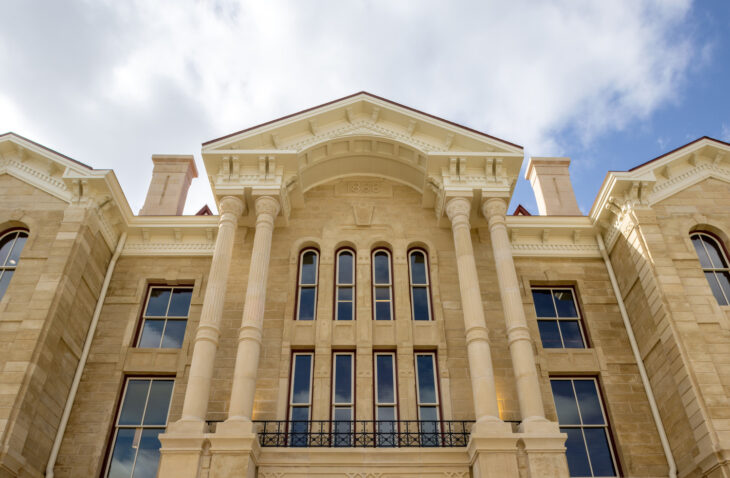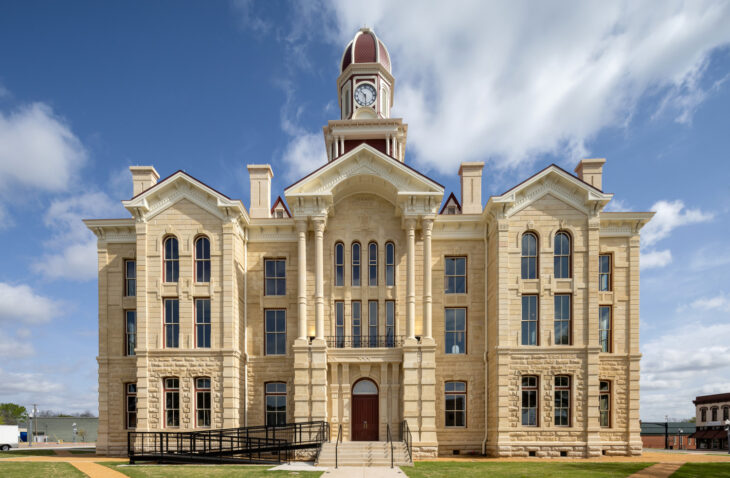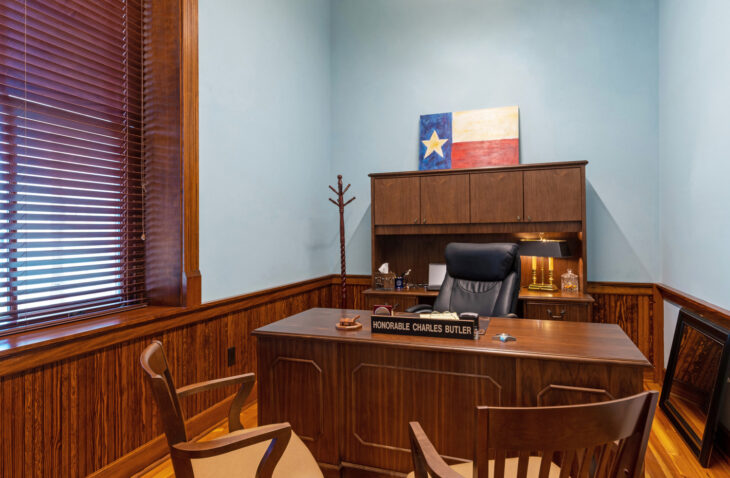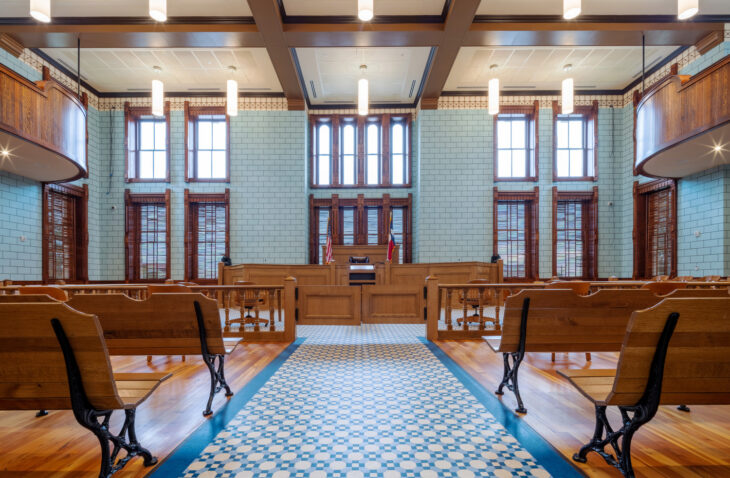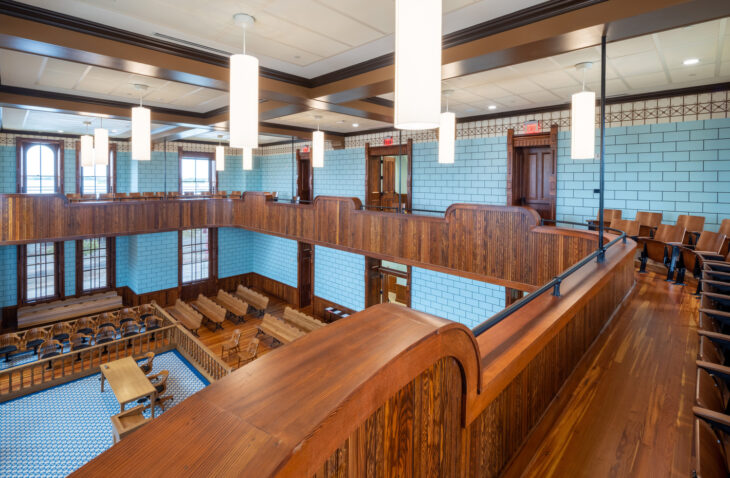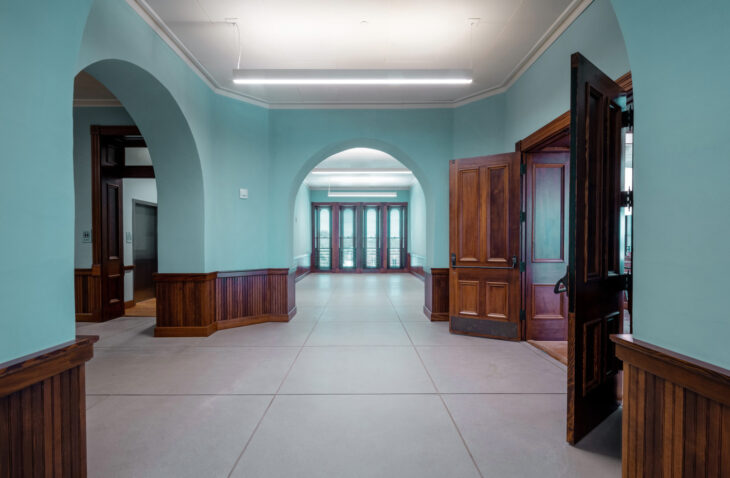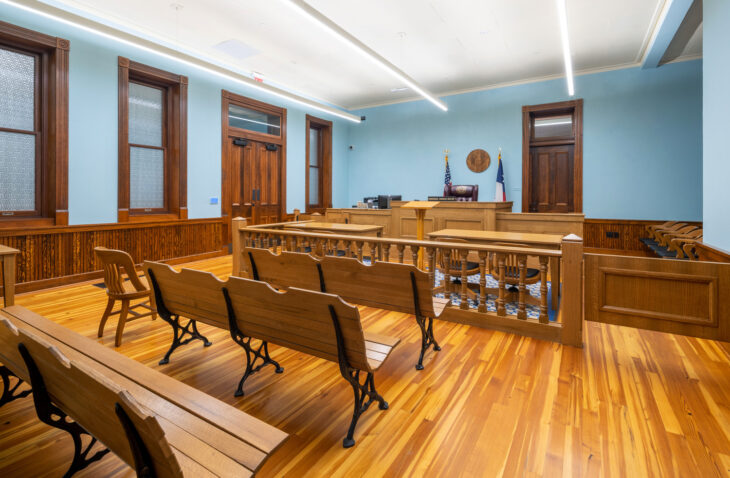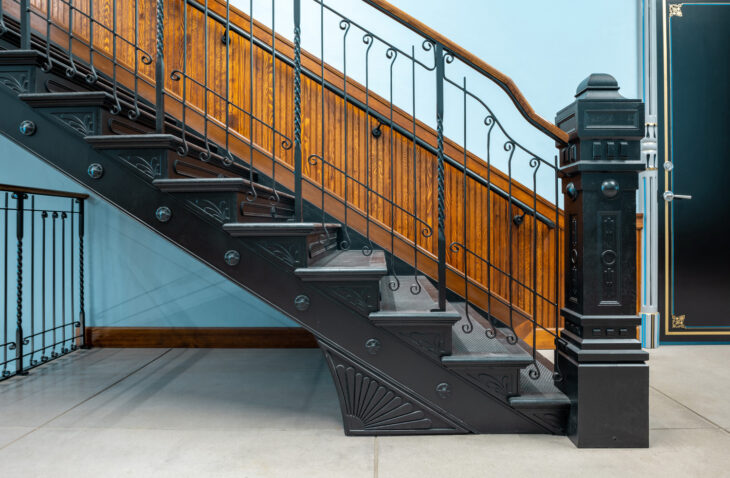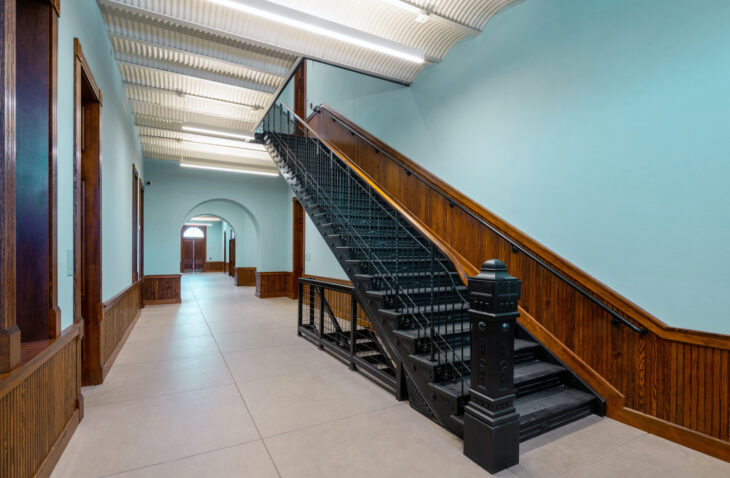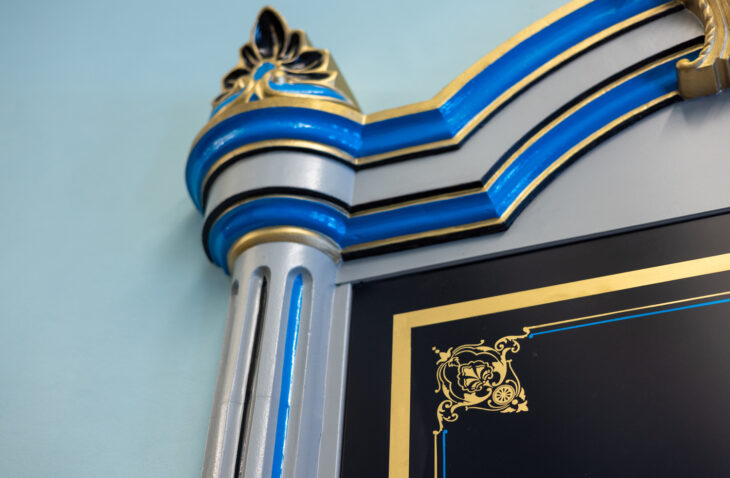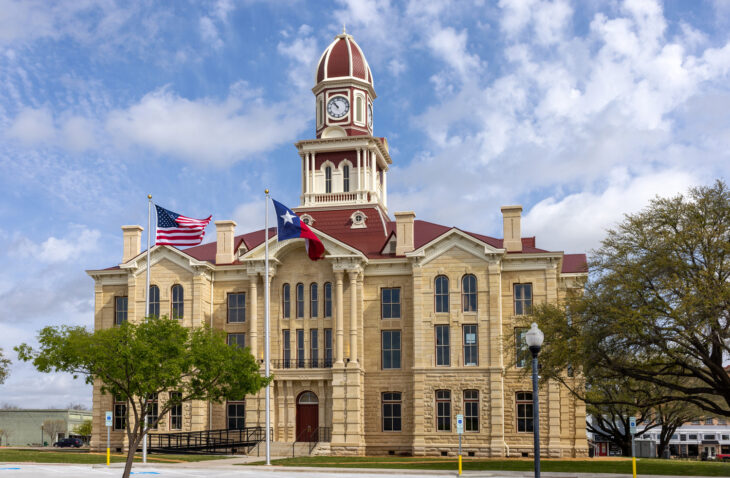Courthouse Renovation
The project: IMEG provided structural and civil engineering services for the interior and exterior restoration of the historic Fannin County Courthouse. Originally built in 1889, the courthouse suffered significant damage from a fire in 1929, which led to major repairs and reconfigurations in the early 1930s, including the installation of a concrete header beam and
a structural steel roof. A modernization effort in 1965 altered its historic character by covering the original stone façade with black mastic and a new limestone façade, reconfiguring the courtroom, and adding an elevator.
The goal: The primary goal of the project was to return the courthouse to its original 1889 appearance while ensuring it remained structurally sound and compliant with modern building codes. The restoration focused on reversing previous alterations, including the removal of the 1960s façade and reconstructing key architectural features such as the bell/clock tower, corner turrets, and the two-story courtroom. Additionally, the project aimed to assess and address structural deficiencies, foundation movement, and material degradation while preserving the building’s historical integrity.
The design: The design process involved a thorough structural investigation to evaluate the condition of the existing floor framing, unreinforced limestone walls, and foundations. This assessment ensured the building could support new loads and structural modifications. Extensive testing and documentation guided the reconstruction of the original roof and clock tower, including the use of structural steel framing to reduce gravity loads and resist uplift wind forces.
The project also included:
- Cleaning and restoring the original stone façade
- Repointing mortar joints and supporting cracked stone lintels with steel angles
- Addressing interior wall openings and foundation movement
- Constructing a new concrete cap beam and rebuilding the roof structure with light gauge metal trusses and metal roof decking
- Reconstructing the clock tower with structural steel framing to distribute loads efficiently
The restoration was guided by original construction documents and field investigations, ensuring historical accuracy. Source matching stone presented challenges, but reopening the original quarry helped maintain authenticity. The phased removal of the 1960s façade helped manage unknowns and control project costs.
The outcome: The restoration returned the courthouse to its 1889 appearance while ensuring structural integrity and modern functionality. Key architectural elements were preserved, interior finishes restored, and stability reinforced through strategic engineering. The courthouse now stands as a historically authentic and structurally sound civic space for the community.



